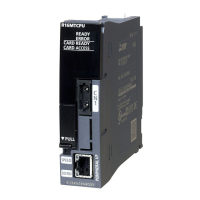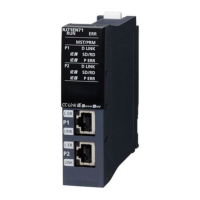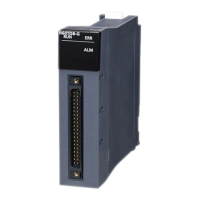368
29 POSITIONING CONTROL FUNCTION
29.4 Auxiliary Function
(3) If the start position is after the near-point dog:
1. When the DSZR/DDSZR instruction is executed, OPR will be started.
2. Transfer operation will be started in the OPR direction at the OPR speed.
3. If the reverse rotation limit 1 (reverse rotation limit) is detected, the speed will decelerate, and the operation will stop.
4. Transfer operation will be started in the opposite direction of the OPR direction at the OPR speed.
5. If the front end of the near-point dog is detected, the speed will decelerate and the operation will stop. (The workpiece
will detect (come out) the near-point dog area.)
6. Transfer operation will be started in the OPR direction at the OPR speed. (The workpiece will enter the near-point dog
area again.)
7. If the front end of the near-point dog is detected, the speed will be reduced to the creep speed.
8. After detecting the rear end of the near-point dog, if the zero signal is detected for the specified number of times is
detected, the operation will be stopped.
(4) If the limit switch in the OPR direction turns on (if the start position is at reverse
rotation limit 1):
1. When the DSZR/DDSZR instruction is executed, OPR will be started.
2. Transfer operation will be started in the opposite direction of the OPR direction at the OPR speed.
3. If the front end of the near-point dog is detected, the speed will decelerate and the operation will stop. (The workpiece
will detect (come out) the near-point dog area.)
4. Transfer operation will be started in the OPR direction at the OPR speed. (The workpiece will enter the near-point dog
area again.)
5. If the front end of the near-point dog is detected, the speed will be reduced to the creep speed.
6. After detecting the rear end of the near-point dog, if the zero signal is detected for the specified number of times is
detected, the operation will be stopped.
When the same device is specified for the near-point dog signal and the zero signal and OPR zero signal
counts is 1, OPR is stopped when the OPR is completed by the near-point dog signal detection, not by the
zero signal detection. When the timing of counting start of the number of zero signals is set to the front end of
near-point dog, the number of zero signals is counted from when the near-point dog signal is detected.

